数模-遗传算法求解TSP问题
代码:
function GaTSPChen
CityNum = 30; % 城市数目,可以选 10, 30, 50, 75
[dislist, Clist] = tsp(CityNum); % dislist 为城市之间相互的距离,Clist 为各城市的坐标
inn = 30; % 初始种群大小
gnMax = 500; % 最大代数
crossProb = 0.8; % 交叉概率
muteProb = 0.8; % 变异概率
% 随机产生初始种群
population = zeros(inn, CityNum); % population 为初始种群,包括多条染色体
for i = 1 : inn
population(i,:) = randperm(CityNum);
end
[~, cumulativeProbs] = calPopulationValue(population, dislist); % 计算种群每条染色体的累计概率
generationNum = 1;
generationMeanValue = zeros(generationNum, 1); % 每一代的平均距离
generationMaxValue = zeros(generationNum, 1); % 每一代的最短距离
bestRoute = zeros(inn, CityNum); % 最佳路径
newPopulation = zeros(inn, CityNum); % 新的种群
while generationNum < gnMax + 1
for j = 1 : 2 : inn
selectedChromos = select(cumulativeProbs); % 选择操作,选出两条需要交叉编译的染色体,即父亲母亲
crossedChromos = cross(population, selectedChromos, crossProb); % 交叉操作,返回交叉后的染色体
newPopulation(j, :) = mut(crossedChromos(1, :),muteProb); % 对交叉后的染色体进行变异操作
newPopulation(j + 1, :) = mut(crossedChromos(2, :), muteProb); % 对交叉后的染色体进行变异操作
end
population = newPopulation; %产生了新的种群
[populationValue, cumulativeProbs] = calPopulationValue(population, dislist); % 计算新种群的适应度
% 记录当前代最好和平均的适应度
[fmax, nmax] = max(populationValue); % 因为计算适应度时取距离的倒数,这里面取最大的倒数,即最短的距离
generationMeanValue(generationNum) = 1 / mean(populationValue);
generationMaxValue(generationNum) = 1 / fmax;
bestChromo = population(nmax, :); % 前代最佳染色体,即对应的路径
bestRoute(generationNum, :) = bestChromo; % 记录每一代的最佳染色体
drawTSP(Clist, bestChromo, generationMaxValue(generationNum), generationNum, 0);
generationNum = generationNum + 1;
end
[bestValue,index] = min(generationMaxValue);
drawTSP(Clist, bestRoute(index, :), bestValue, index,1);
figure(2);
plot(generationMaxValue, 'r');
hold on;
plot(generationMeanValue, 'b');
grid;
title('搜索过程');
legend('最优解', '平均解');
fprintf('遗传算法得到的最短距离: %.2f\n', bestValue);
fprintf('遗传算法得到的最短路线');
disp(bestRoute(index, :));
end
%------------------------------------------------
% 计算所有染色体的适应度
function [chromoValues, cumulativeProbs] = calPopulationValue(s, dislist)
inn = size(s, 1); % 读取种群大小
chromoValues = zeros(inn, 1);
for i = 1 : inn
chromoValues(i) = CalDist(dislist, s(i, :)); % 计算每条染色体的适应度
end
chromoValues = 1./chromoValues'; % 因为让距离越小,选取的概率越高,所以取距离倒数
% 根据个体的适应度计算其被选择的概率
fsum = 0;
for i = 1 : inn
% 乘以15次方的原因是让好的个体被选取的概率更大(因为适应度取距离的倒数,若不乘次方,则个体相互之间的适应度差别不大),换成一个较大的数也行
fsum = fsum + chromoValues(i)^15;
end
% 计算单个概率
probs = zeros(inn, 1);
for i = 1: inn
probs(i) = chromoValues(i)^15 / fsum;
end
% 计算累积概率
cumulativeProbs = zeros(inn,1);
cumulativeProbs(1) = probs(1);
for i = 2 : inn
cumulativeProbs(i) = cumulativeProbs(i - 1) + probs(i);
end
cumulativeProbs = cumulativeProbs';
end
%--------------------------------------------------
%“选择”操作,返回所选择染色体在种群中对应的位置
% cumulatedPro 所有染色体的累计概率
function selectedChromoNums = select(cumulatedPro)
selectedChromoNums = zeros(2, 1);
% 从种群中选择两个个体,最好不要两次选择同一个个体
for i = 1 : 2
r = rand; % 产生一个随机数
prand = cumulatedPro - r;
j = 1;
while prand(j) < 0
j = j + 1;
end
selectedChromoNums(i) = j; % 选中个体的序号
if i == 2 && j == selectedChromoNums(i - 1) % 若相同就再选一次
r = rand; % 产生一个随机数
prand = cumulatedPro - r;
j = 1;
while prand(j) < 0
j = j + 1;
end
end
end
end
%------------------------------------------------
% “交叉”操作
function crossedChromos = cross(population, selectedChromoNums, crossProb)
length = size(population, 2); % 染色体的长度
crossProbc = crossMuteOrNot(crossProb); %根据交叉概率决定是否进行交叉操作,1则是,0则否
crossedChromos(1,:) = population(selectedChromoNums(1), :);
crossedChromos(2,:) = population(selectedChromoNums(2), :);
if crossProbc == 1
c1 = round(rand * (length - 2)) + 1; %在[1,bn - 1]范围内随机产生一个交叉位 c1
c2 = round(rand * (length - 2)) + 1; %在[1,bn - 1]范围内随机产生一个交叉位 c2
chb1 = min(c1, c2);
chb2 = max(c1,c2);
middle = crossedChromos(1,chb1+1:chb2); % 两条染色体 chb1 到 chb2 之间互换位置
crossedChromos(1,chb1 + 1 : chb2)= crossedChromos(2, chb1 + 1 : chb2);
crossedChromos(2,chb1 + 1 : chb2)= middle;
for i = 1 : chb1 % 看交叉后,染色体上是否有相同编码的情况(路径上重复出现两个城市)。若有,则该编码不参与交叉
while find(crossedChromos(1,chb1 + 1: chb2) == crossedChromos(1, i))
location = find(crossedChromos(1,chb1 + 1: chb2) == crossedChromos(1, i));
y = crossedChromos(2,chb1 + location);
crossedChromos(1, i) = y;
end
while find(crossedChromos(2,chb1 + 1 : chb2) == crossedChromos(2, i))
location = find(crossedChromos(2, chb1 + 1 : chb2) == crossedChromos(2, i));
y = crossedChromos(1, chb1 + location);
crossedChromos(2, i) = y;
end
end
for i = chb2 + 1 : length
while find(crossedChromos(1, 1 : chb2) == crossedChromos(1, i))
location = logical(crossedChromos(1, 1 : chb2) == crossedChromos(1, i));
y = crossedChromos(2, location);
crossedChromos(1, i) = y;
end
while find(crossedChromos(2, 1 : chb2) == crossedChromos(2, i))
location = logical(crossedChromos(2, 1 : chb2) == crossedChromos(2, i));
y = crossedChromos(1, location);
crossedChromos(2, i) = y;
end
end
end
end
%--------------------------------------------------
%“变异”操作
% choromo 为一条染色体
function snnew = mut(chromo,muteProb)
length = size(chromo, 2); % 染色体的的长度
snnew = chromo;
muteProbm = crossMuteOrNot(muteProb); % 根据变异概率决定是否进行变异操作,1则是,0则否
if muteProbm == 1
c1 = round(rand*(length - 2)) + 1; % 在 [1, bn - 1]范围内随机产生一个变异位
c2 = round(rand*(length - 2)) + 1; % 在 [1, bn - 1]范围内随机产生一个变异位
chb1 = min(c1, c2);
chb2 = max(c1, c2);
x = chromo(chb1 + 1 : chb2);
snnew(chb1 + 1 : chb2) = fliplr(x); % 变异,则将两个变异位置的染色体倒转
end
end
% 根据变异或交叉概率,返回一个 0 或 1 的数
function crossProbc = crossMuteOrNot(crossMuteProb)
test(1: 100) = 0;
l = round(100 * crossMuteProb);
test(1 : l) = 1;
n = round(rand * 99) + 1;
crossProbc = test(n);
end
%------------------------------------------------
% 计算一条染色体的适应度
% dislist 为所有城市相互之间的距离矩阵
% chromo 为一条染色体,即一条路径
function chromoValue = CalDist(dislist, chromo)
DistanV = 0;
n = size(chromo, 2); % 染色体的长度
for i = 1 : (n - 1)
DistanV = DistanV + dislist(chromo(i), chromo(i + 1));
end
DistanV = DistanV + dislist(chromo(n), chromo(1));
chromoValue = DistanV;
end
%------------------------------------------------
% 画图
% Clist 为城市坐标
% route 为一条路径
function drawTSP(Clist, route, generationValue, generationNum,isBestGeneration)
CityNum = size(Clist, 1);
for i = 1 : CityNum - 1
plot([Clist(route(i), 1),Clist(route(i + 1), 1)], [Clist(route(i),2),Clist(route(i+1),2)],'ms-','LineWidth',2,'MarkerEdgeColor','k','MarkerFaceColor','g');
text(Clist(route(i), 1),Clist(route(i), 2), [' ', int2str(route(i))]);
text(Clist(route(i+1), 1),Clist(route(i + 1), 2), [' ', int2str(route(i+1))]);
hold on;
end
plot([Clist(route(CityNum), 1), Clist(route(1), 1)], [Clist(route(CityNum), 2), Clist(route(1), 2)],'ms-','LineWidth',2,'MarkerEdgeColor','k','MarkerFaceColor','g');
title([num2str(CityNum),'城市TSP']);
if isBestGeneration == 0 && CityNum ~= 10
text(5, 5, ['第 ',int2str(generationNum),' 代',' 最短距离为 ', num2str(generationValue)]);
else
text(5, 5, ['最终搜索结果:最短距离 ',num2str(generationValue),', 在第 ',num2str(generationNum),' 代达到']);
end
if CityNum == 10 % 因为文字显示位置不一样,所以将城市数目为 10 时单独编写
if isBestGeneration == 0
text(0, 0, ['第 ',int2str(generationNum),' 代',' 最短距离为 ', num2str(generationValue)]);
else
text(0, 0, ['最终搜索结果:最短距离 ',num2str(generationValue),', 在第 ', num2str(generationNum),' 代达到']);
end
end
hold off;
pause(0.005);
end
%------------------------------------------------
%城市位置坐标
function [DLn, cityn] = tsp(n)
DLn = zeros(n, n);
if n == 10
city10 = [0.4 0.4439;0.2439 0.1463;0.1707 0.2293;0.2293 0.761;0.5171 0.9414;
0.8732 0.6536;0.6878 0.5219;0.8488 0.3609;0.6683 0.2536;0.6195 0.2634];%10 cities d'=2.691
for i = 1 : 10
for j = 1 : 10
DLn(i, j) = ((city10(i,1)-city10(j,1))^2 + (city10(i,2)-city10(j,2))^2)^0.5;
end
end
cityn = city10;
end
if n == 30
city30 = [41 94;37 84;54 67;25 62;7 64;2 99;68 58;71 44;54 62;83 69;64 60;18 54;22 60;
83 46;91 38;25 38;24 42;58 69;71 71;74 78;87 76;18 40;13 40;82 7;62 32;58 35;45 21;41 26;44 35;4 50]; % 30 cities d' = 423.741 by D B Fogel
for i = 1 : 30
for j = 1 : 30
DLn(i,j) = ((city30(i,1)-city30(j,1))^2+(city30(i,2)-city30(j,2))^2)^0.5;
end
end
cityn = city30;
end
if n == 50
city50 = [31 32;32 39;40 30;37 69;27 68;37 52;38 46;31 62;30 48;21 47;25 55;16 57;
17 63;42 41;17 33;25 32;5 64;8 52;12 42;7 38;5 25; 10 77;45 35;42 57;32 22;
27 23;56 37;52 41;49 49;58 48;57 58;39 10;46 10;59 15;51 21;48 28;52 33;
58 27;61 33;62 63;20 26;5 6;13 13;21 10;30 15;36 16;62 42;63 69;52 64;43 67];%50 cities d'=427.855 by D B Fogel
for i = 1 : 50
for j = 1:50
DLn(i, j) = ((city50(i,1) - city50(j,1))^2 + (city50(i,2) - city50(j,2))^2)^0.5;
end
end
cityn = city50;
end
if n == 75
city75 = [ 6 25 ; 7 43 ;9 56 ;10 70 ;11 28 ;12 17 ;12 38 ; 15 5 ; 15 14 ; 15 56 ;
16 19 ; 17 64 ; 20, 30 ; 21 48 ; 21 45;21 36 ; 22 53 ; 22, 22 ; 26 29 ; 26 13;
26 59 ; 27 24 ; 29, 39 ; 30 50 ; 30 20 ;30 60 ; 31 76 ; 33, 34 ; 33 44 ; 35 51 ;
35 16 ; 35 60 ; 36, 6 ; 36 26 ; 38 33 ;40 37 ; 40 66 ;40, 60 ; 40 20 ; 41 46 ;
43 26 ; 44 13 ; 45 42 ; 45 35 ; 47 66 ;48 21 ; 50 30 ; 50 40 ; 50 50 ; 50 70 ;
50 4 ; 50 15 ; 51 42 ; 52 26 ; 54 38 ;54 10 ; 55 34 ; 55 45 ; 55 50 ; 55 65 ;
55 57 ; 55 20 ; 57 72 ; 59 5 ; 60 15 ;62 57 ; 62 48 ; 62 35 ; 62 24 ; 64 4 ;
65 27 ; 66 14 ; 66 8 ; 67 41 ; 70 64 ]; % 75 cities d'=549.18 by D B Fogel
for i = 1 : 75
for j = 1 : 75
DLn(i,j) = ((city75(i,1)-city75(j,1))^2 + (city75(i,2)-city75(j,2))^2)^0.5;
end
end
cityn = city75;
end
end
结果:

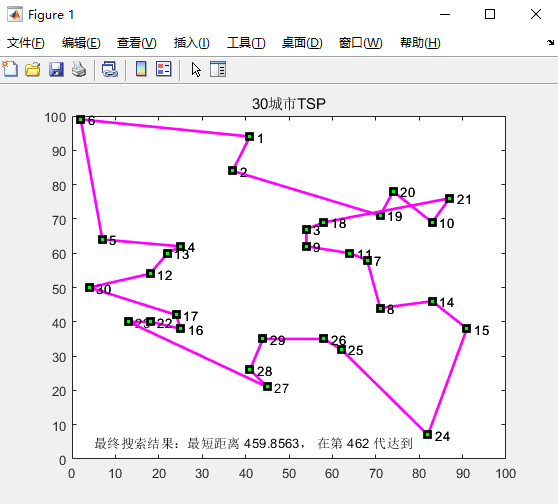
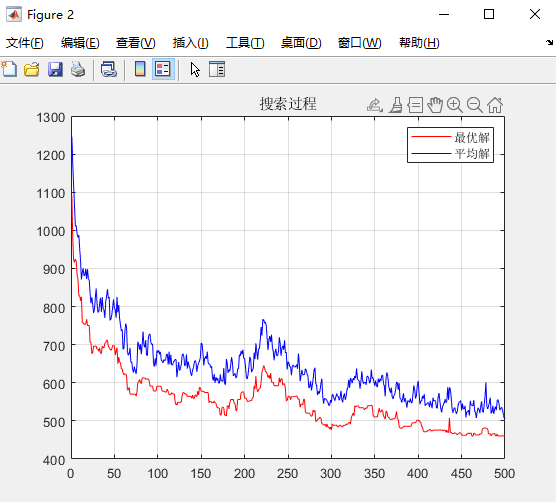
分析:

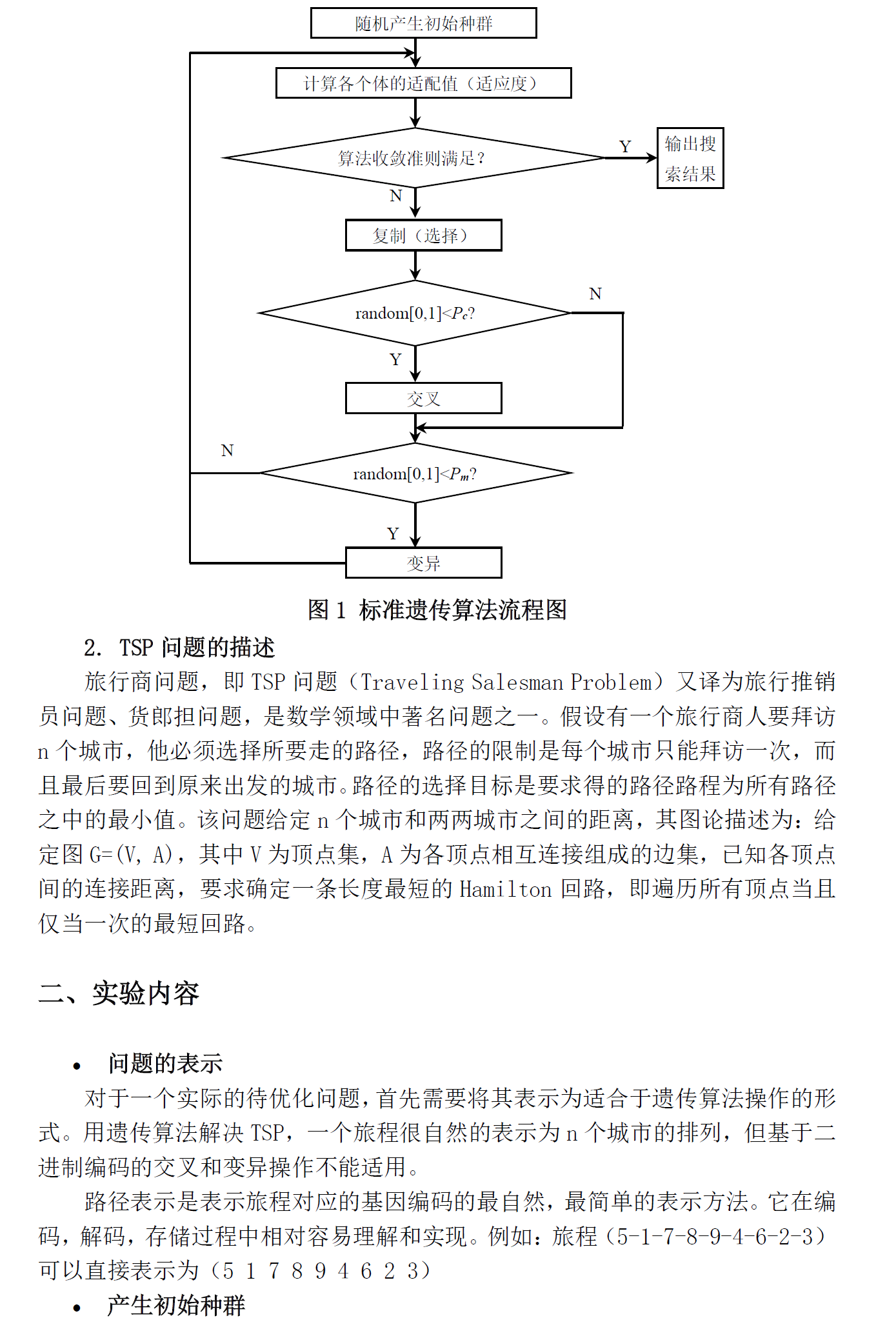
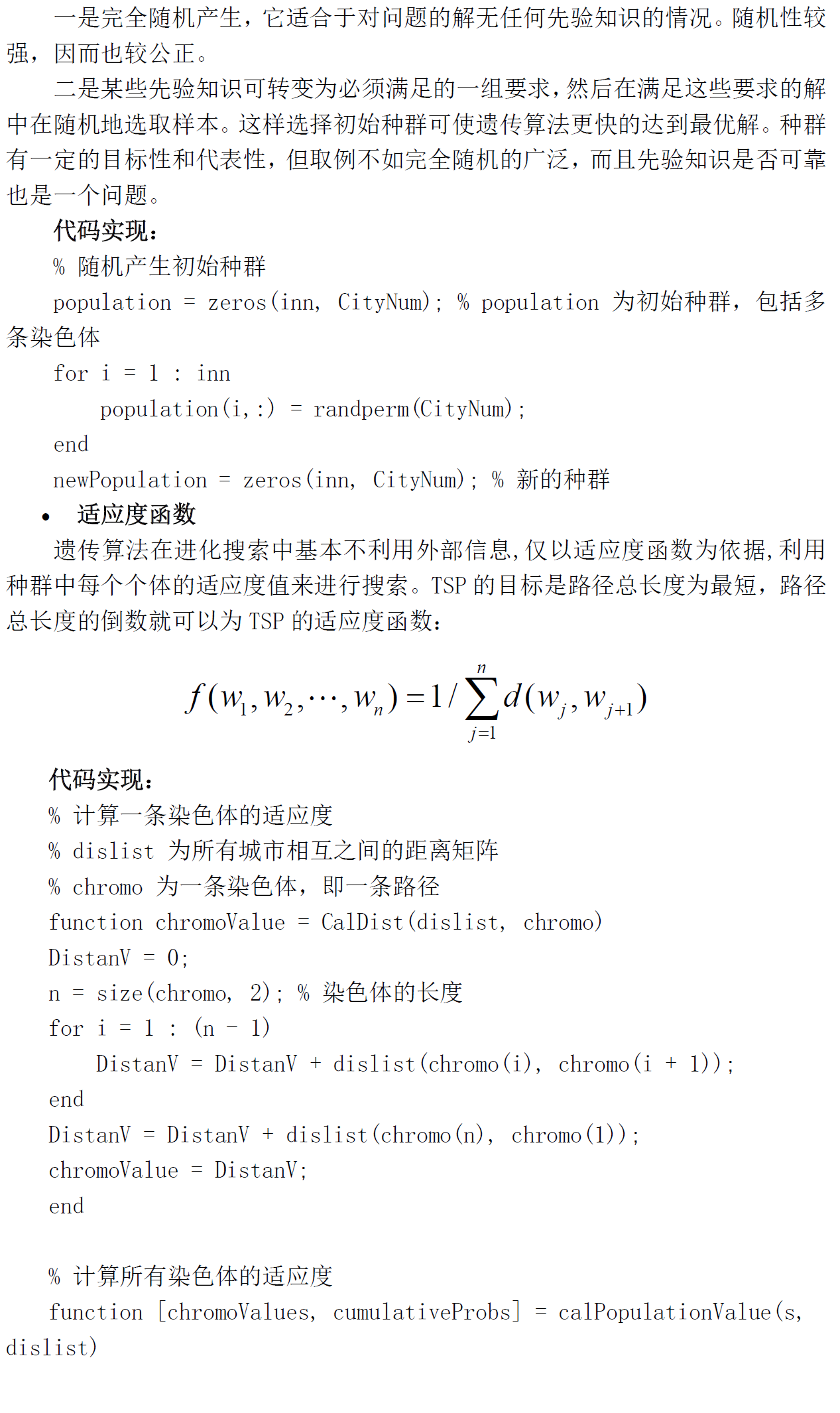
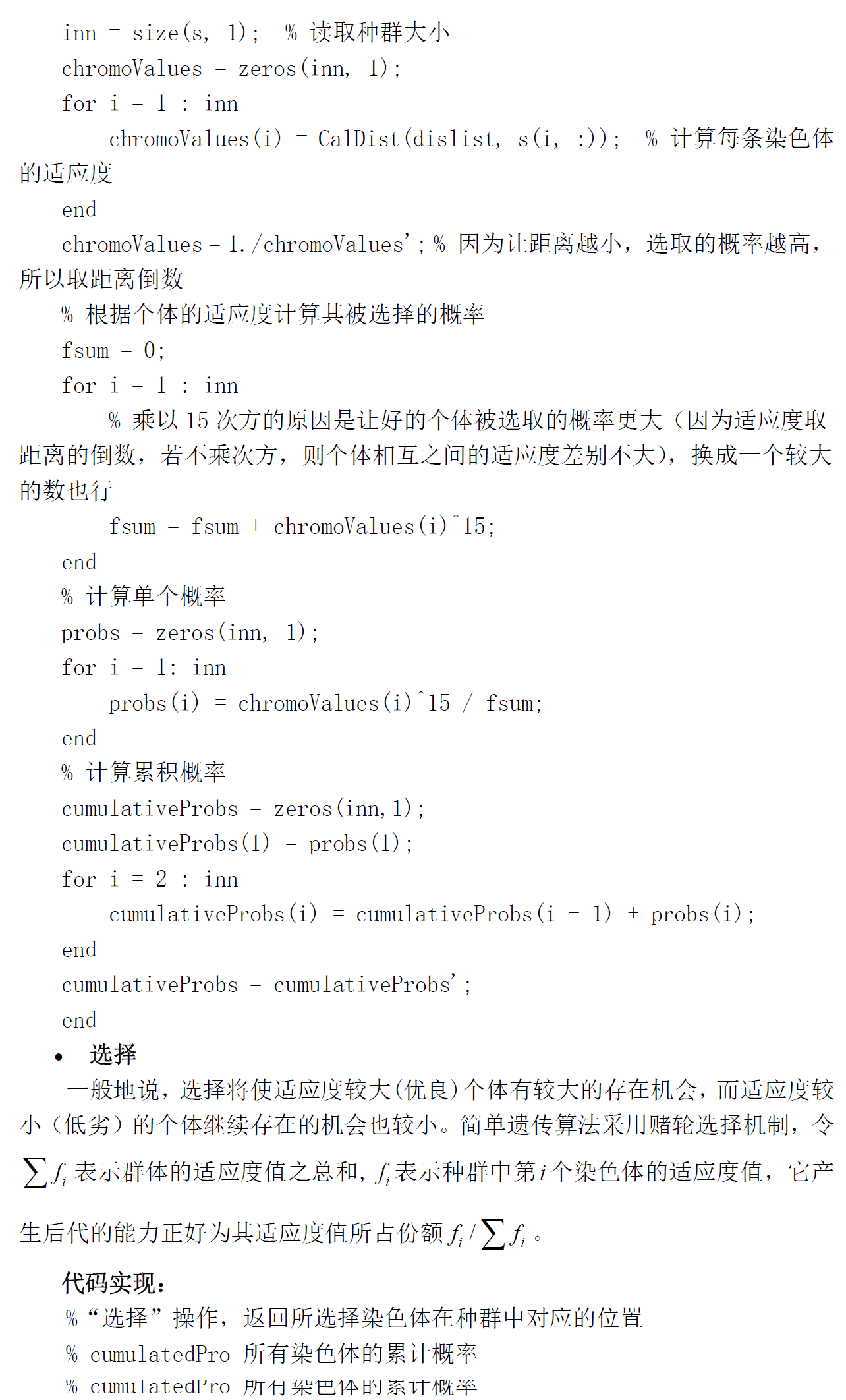
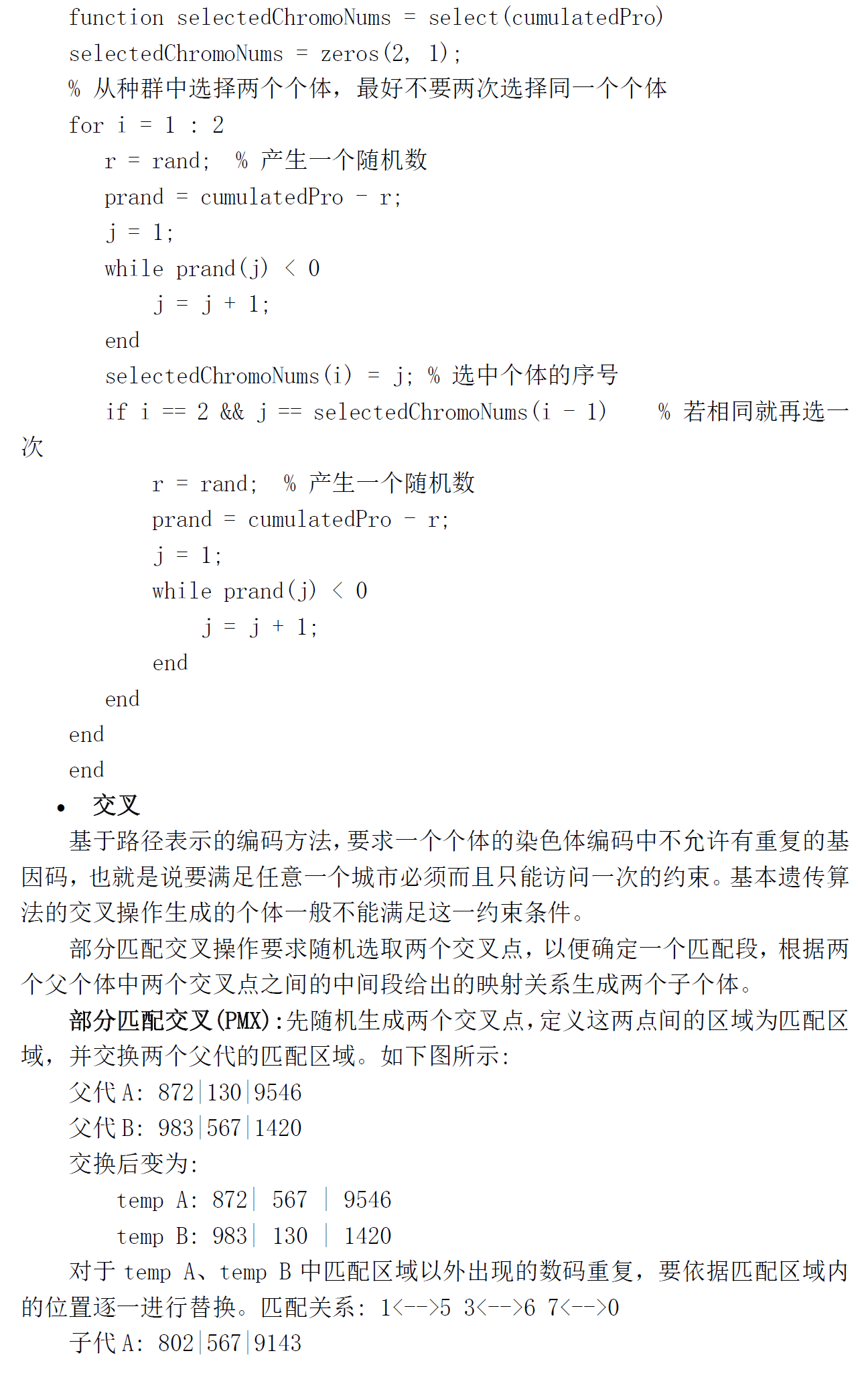
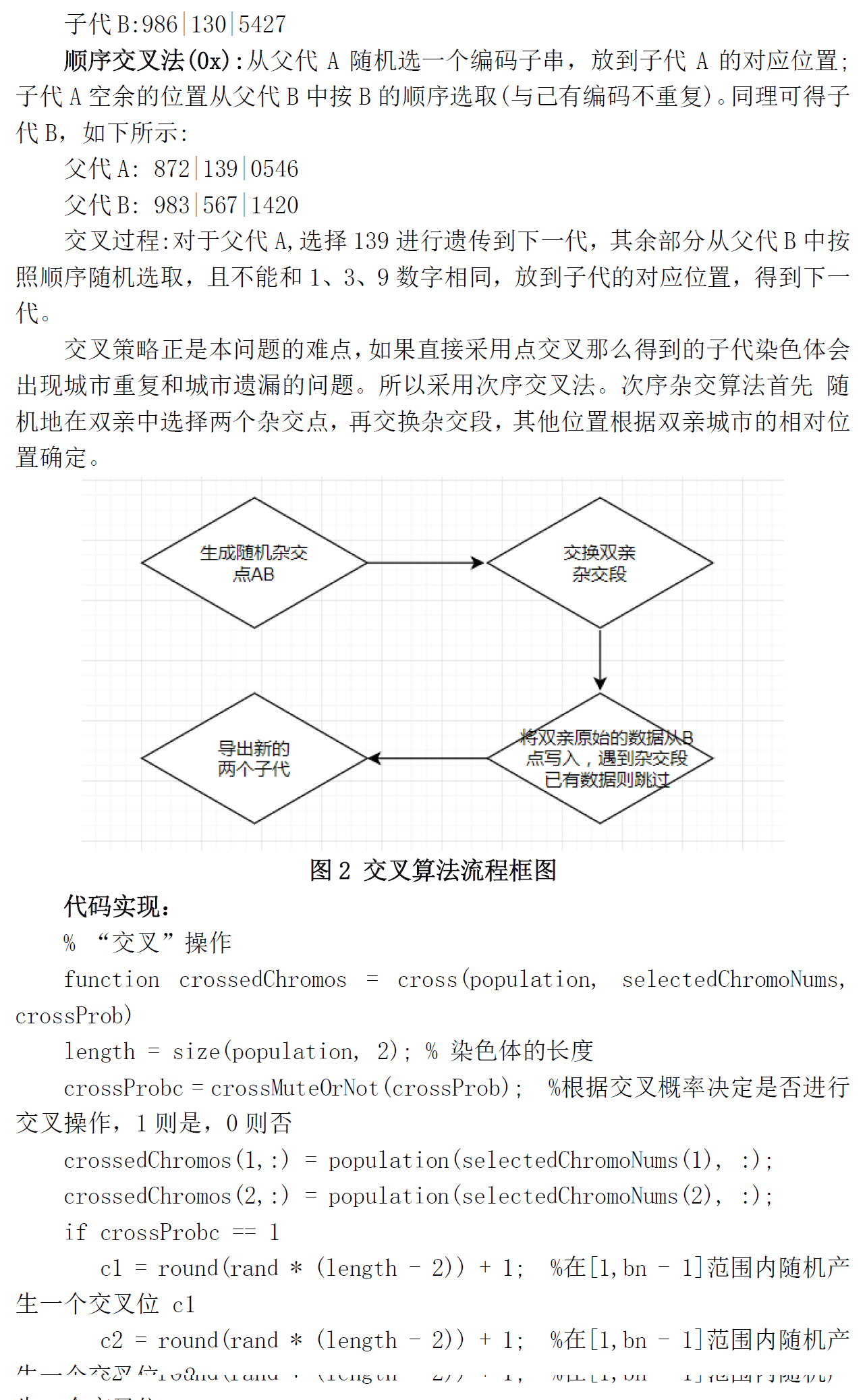
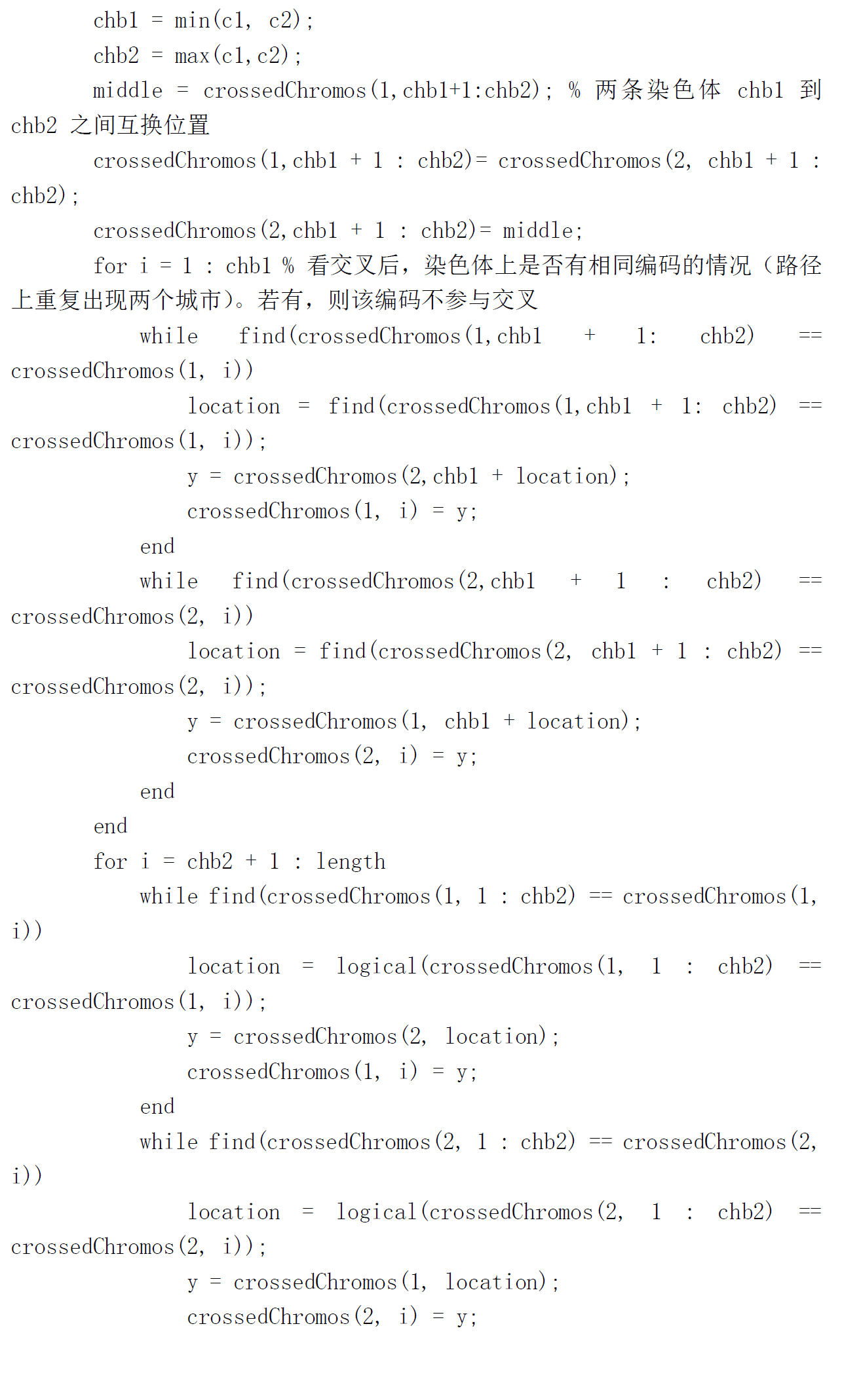

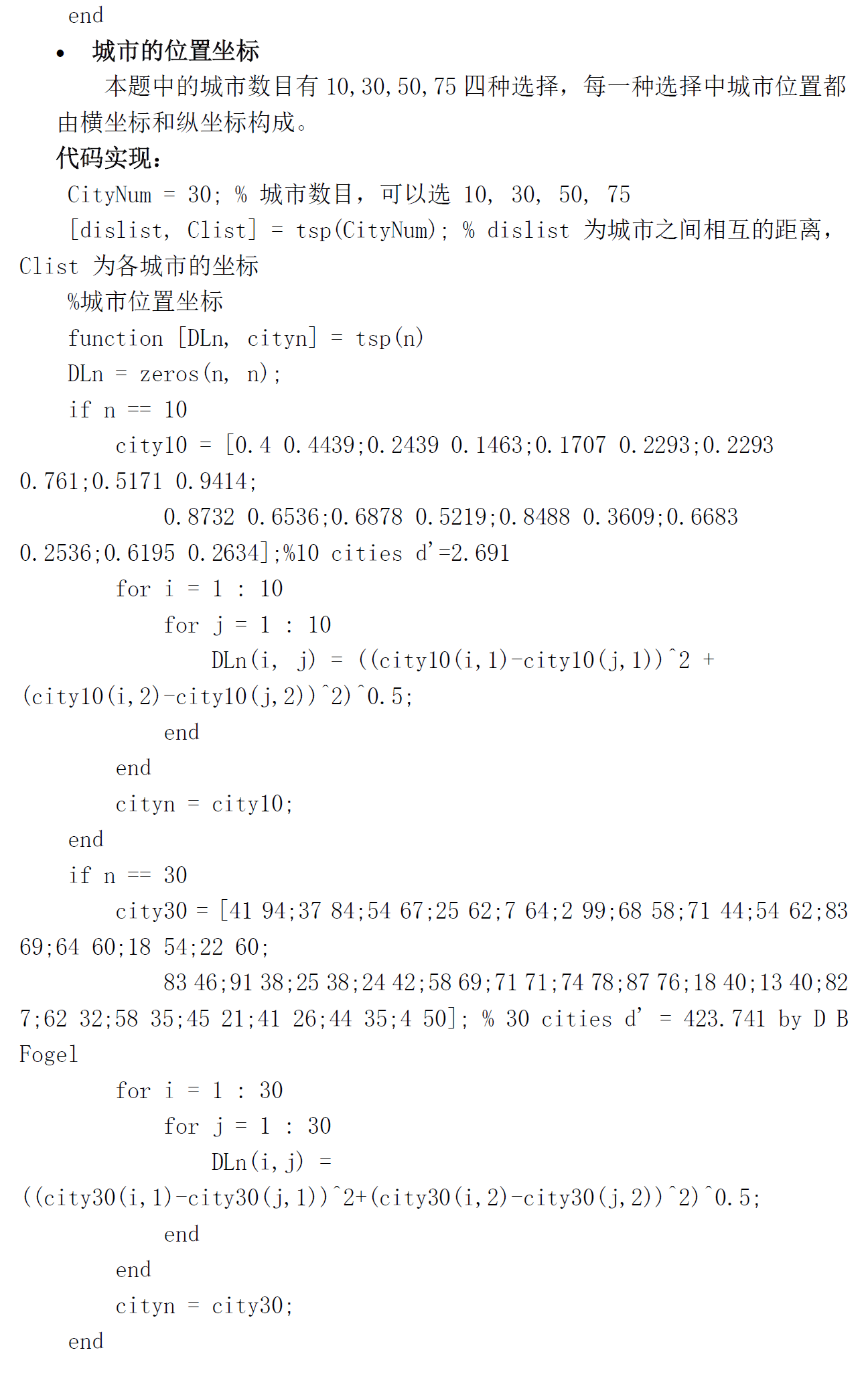


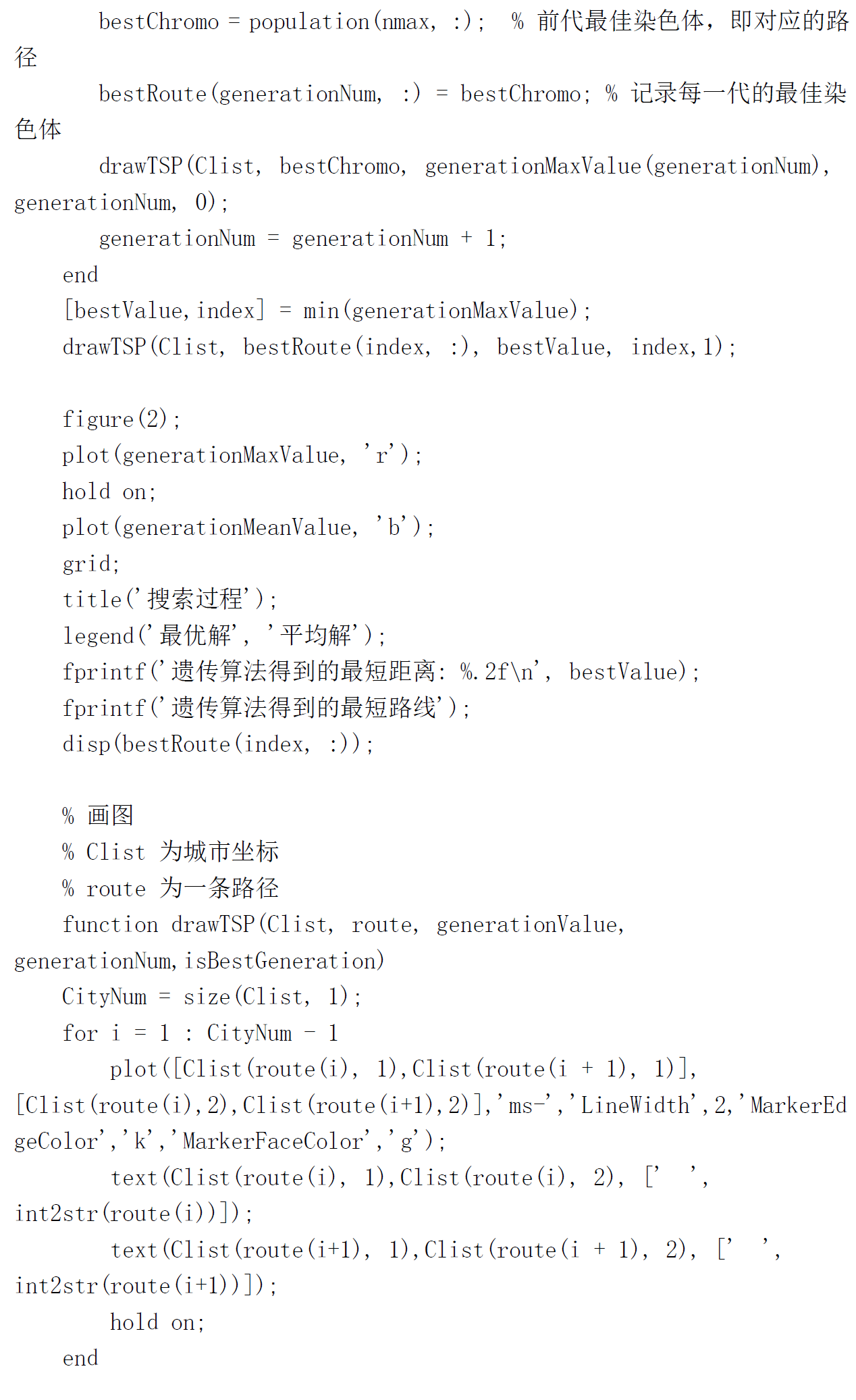
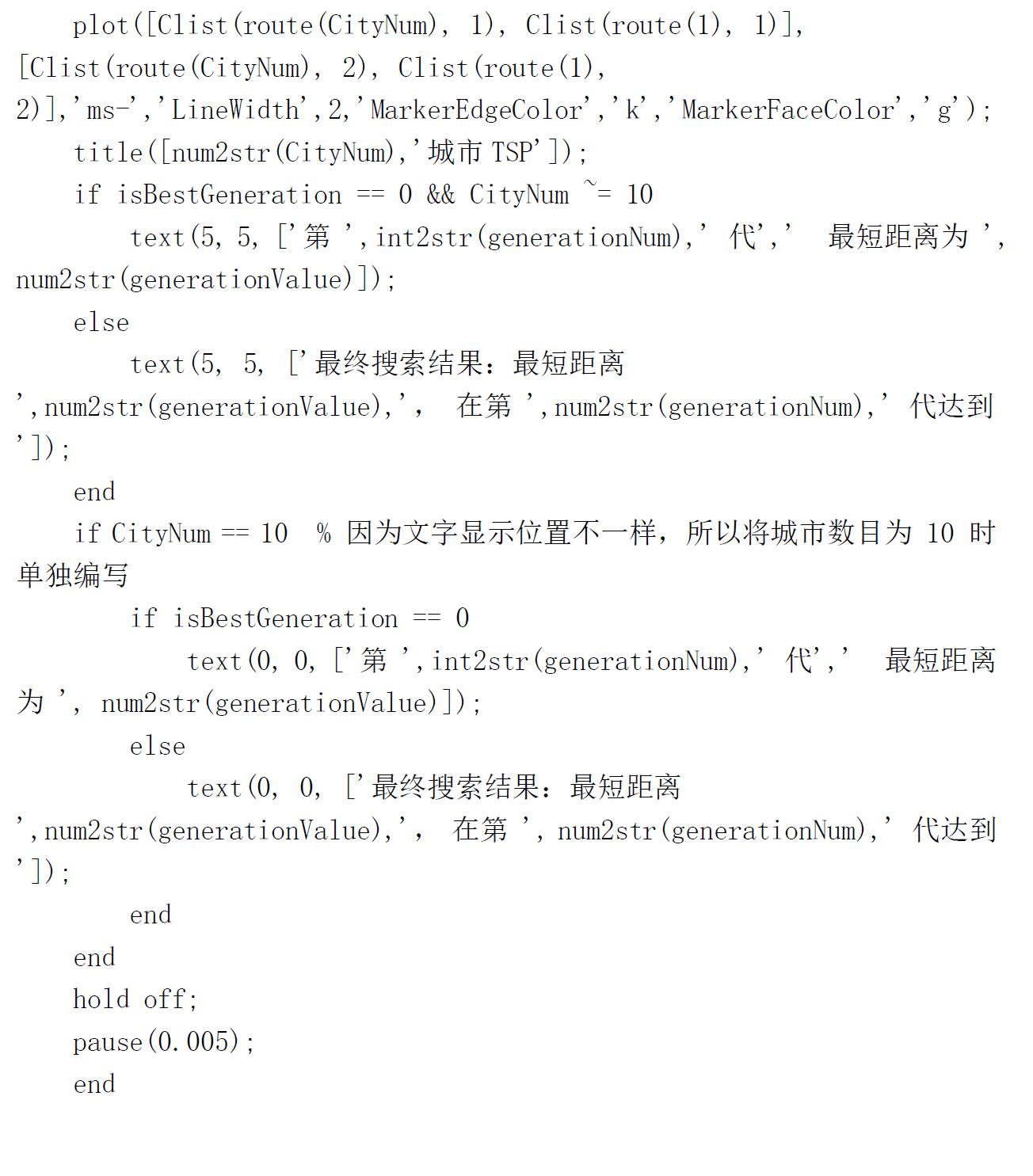


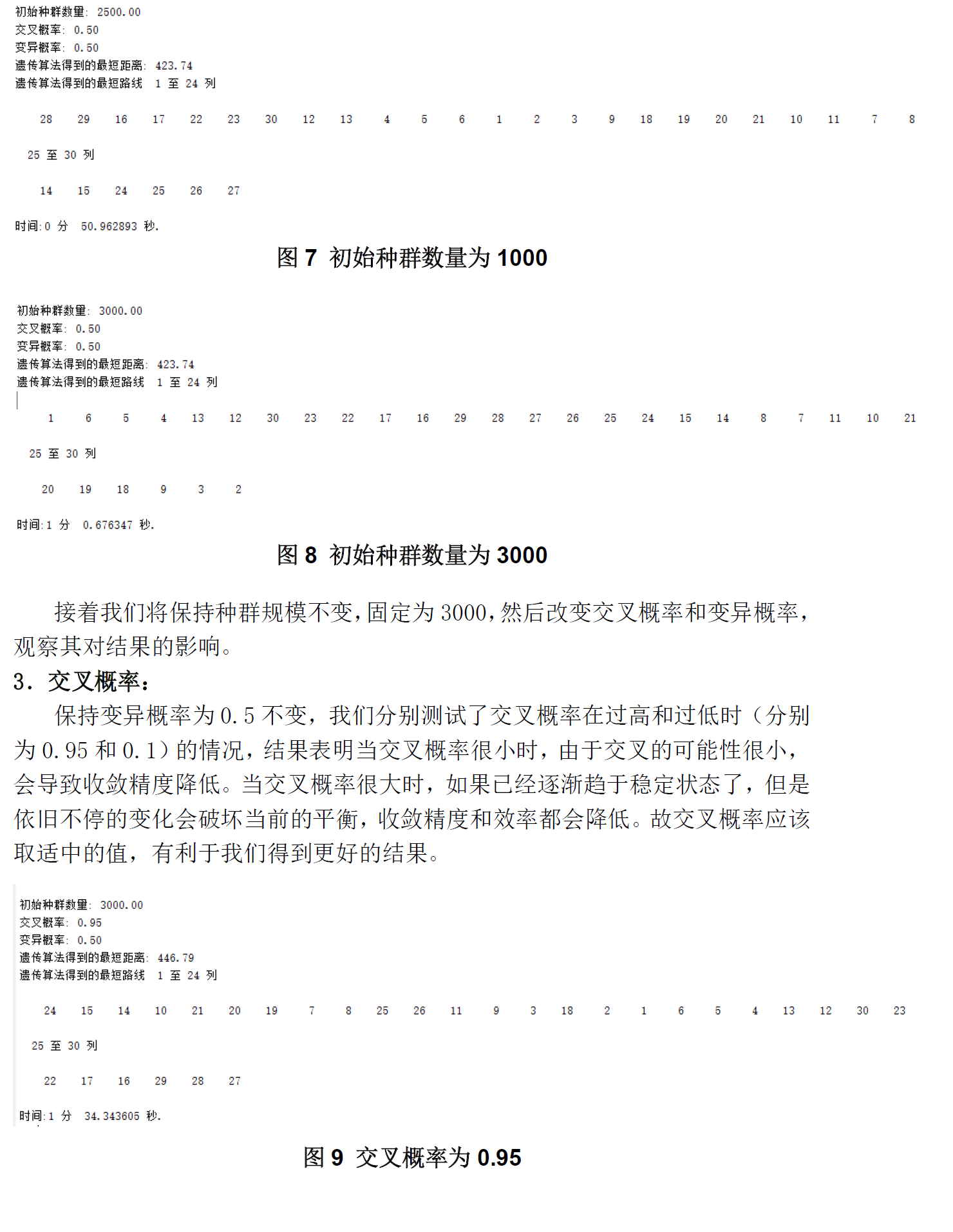

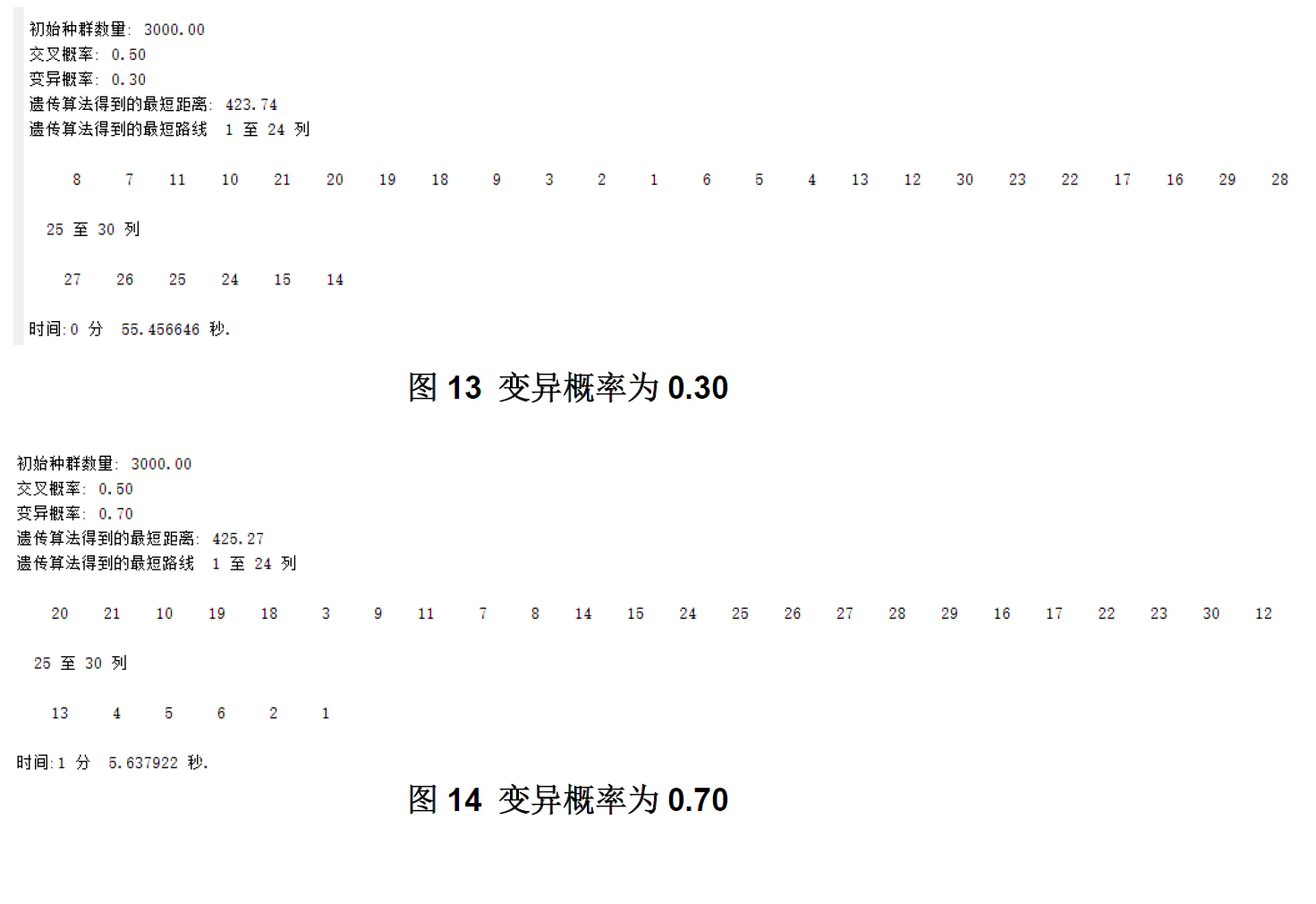
转载请注明出处,欢迎讨论和交流!

